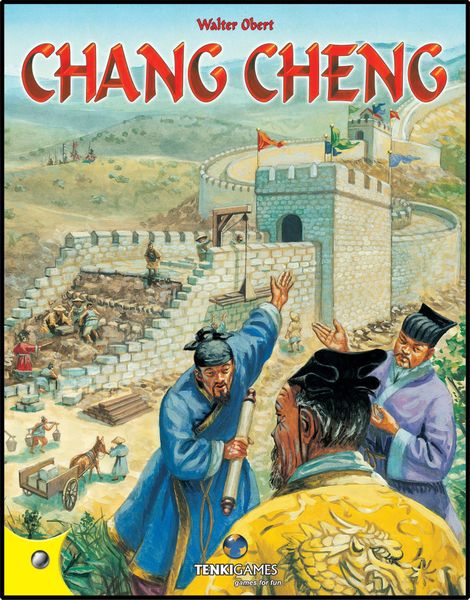Chang Cheng (2007) Board Game
Chang Cheng, designed by Giuseppe Rava and released in 2007, is a board game that takes players back to ancient China during the time of the Great Wall construction. Players take on the role of generals overseeing the construction of the wall and must strategically place their workers to gain control of different sections of the wall.
Game Components of Chang Cheng
How To Setup Chang Cheng
To set up the game, two of the four double-sided boards are placed adjacent to each other on the table. Each board has three Chinese provinces and three Mongol territories, with reputation counters placed face-up in the Chinese provinces and threat counters placed face-down in the Mongol territories. Each player chooses a color and receives 14 single wall pieces, one double wall piece, one tower, and six action markers. The oldest player goes first, and play proceeds clockwise.
Gameplay Mechanics and Game Objective
Player Experience
Chang Cheng is a game of strategic placement and tactical maneuvering, where players aim to build parts of the Great Wall to protect Chinese provinces while avoiding penalties from the Mongol territories. The game is known for its minimal luck factor, making it highly tactical and analytical. Games typically last about 60 minutes, and the game is best with three players, though it supports two to four players.
Pros
Cons
Personal Thoughts on Chang Cheng
Chang Cheng is ideal for those who enjoy area control and strategic placement games. It is a great addition to any board game collection, especially for those who appreciate games with minimal luck and high tactical depth. The game’s theme and components are engaging, making it a visually appealing and immersive experience. While it may not be the best fit for casual gamers looking for a light, luck-based experience, it is perfect for gamers who enjoy analytical and strategic gameplay.
We are supported by our audience. When you purchase through links on our site, we may earn an affiliate commission, at no extra cost for you. Learn more.

